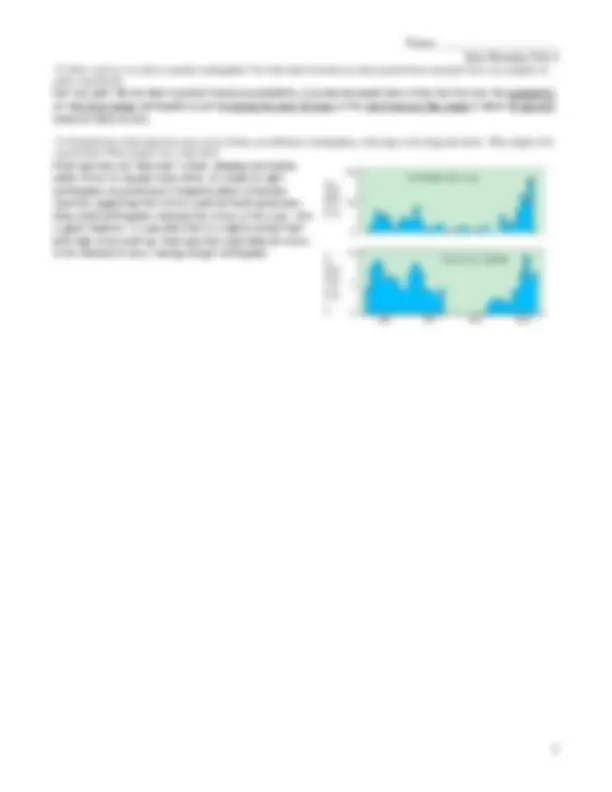



Study with the several resources on Docsity

Earn points by helping other students or get them with a premium plan


Prepare for your exams
Study with the several resources on Docsity

Earn points to download
Earn points by helping other students or get them with a premium plan
Community
Ask the community for help and clear up your study doubts
Discover the best universities in your country according to Docsity users
Free resources
Download our free guides on studying techniques, anxiety management strategies, and thesis advice from Docsity tutors
Material Type: Assignment; Class: Environmental Geology; Subject: Geology; University: Bucknell University; Term: Unknown 1989;
Typology: Assignments
1 / 3

This page cannot be seen from the preview
Don't miss anything!


As stress builds up, rocks begin to bend elastically to accommodate the stress. When the stress becomes too great, the two blocks of rock move past each other along a fault, releasing the stress as seismic energy, and the rocks “spring back” elastically, and the bending (folding) is not recorded in the rocks.
When an earthquake occurs, the Earth, the box holding the seismograph, the spring or lever, and the recording paper all move together. Due to its inertia and because it is mounted on a spring or lever, the mass (attached to a pen) does not move relative to the other components, thus the system records the movement of the Earth where the seismograph is located. Other answers are possible, depending on the perspective of the observer
See Fig. 4.8 and associated text and captions. P-wave velocity > S-wave velocity > surface wave velocity. S-waves do not travel through liquids or gases because these substances do not have sufficient shear strength.
An intensity scale measures damage to human-related objects and indicates whether and how much people can sense an earthquake. The Richter scale is more quantifiable, and is based upon how much the ground displacement occurs a certain distance from an earthquake; recorded by analyzing data from several seismographs. Richter magnitude is linearly related to the energy released by an earthquake.
Taking the logarithm of a group of widely varying numbers compresses the numbers so they can be more easily compared as illustrated in the table below.
x x as a power of ten log(x) 1 100 0 10 101 1 100 102 2 1000 103 3 10000 104 4 100000 105 5 1000000 106 6
At the same distance from a seismograph, a magnitude 5 earthquake would cause 100 times less ground movement than a magnitude 7 earthquake. This is because the Richter scale is a log scale, with a factor of ten difference between each Richter unit (10 x 10 = 100 times more ground movement). There is about30 times more energy associated with each Richter unit, so 30 x 30 = 900 times less energy associated with the magnitude 5 quake.
The network was primarily funded to be able to document nuclear explosions to enforce the nuclear test ban treaty. Scientists can tell the difference between underground nuclear explosions and earthquakes.
Divergent zones (rift zones and mid-ocean ridges): shallow focus quakes, normal and) faulting
Transform boundaries (sea-floor and on land); shallow focus quakes; transform (strike-slip) faulting
Convergent zones (subduction zones, ocean-continent and continent-continent collisions): shallow focus quakes, deep focus quakes along subducted plate, reverse and thrust faulting
Intraplate quakes: shallow focus within contintents; not associated with plate boundaries; not well understood The energy of most deep-focus quakes is largely absorbed by the Earth before reaching the surface.